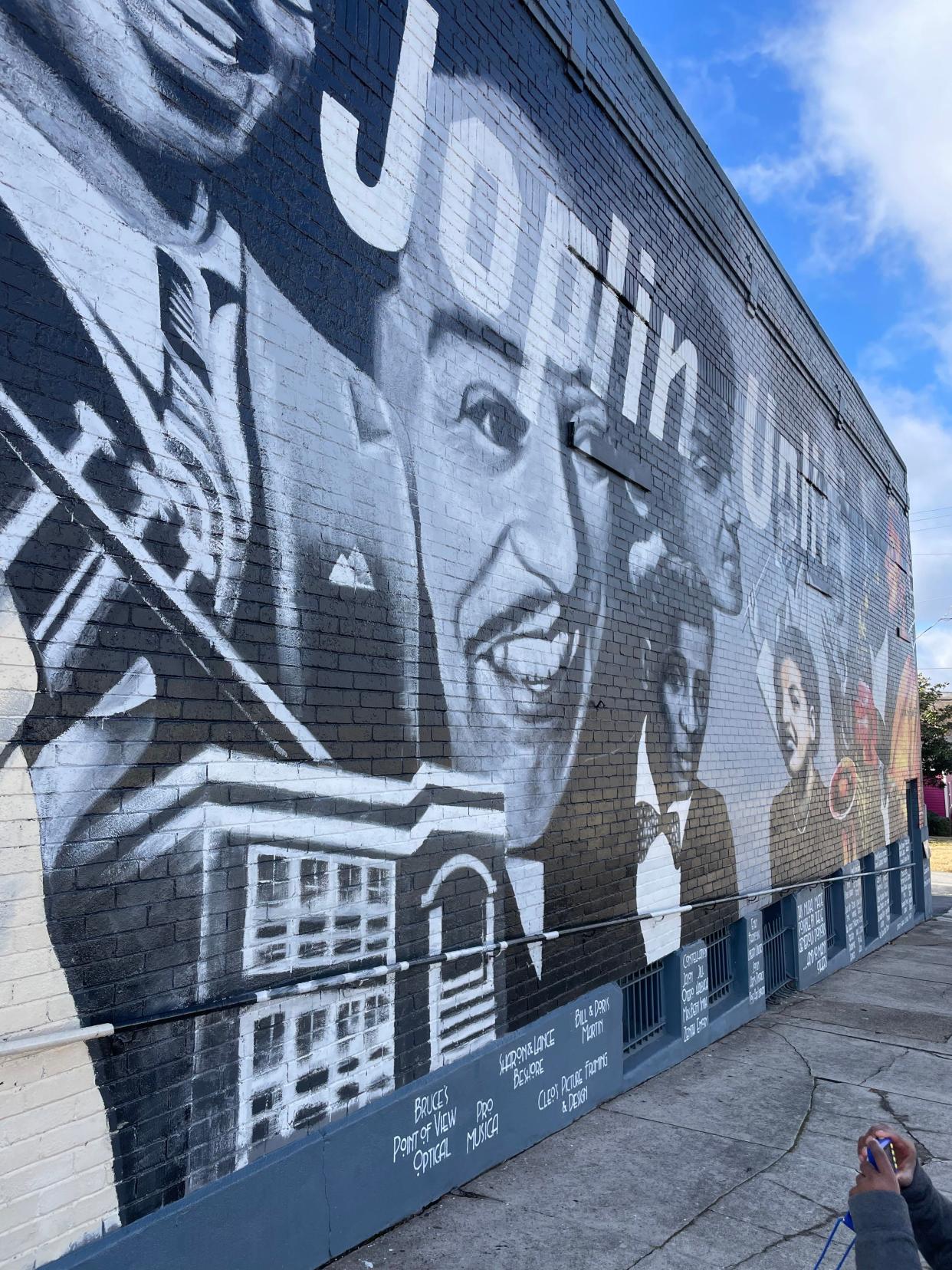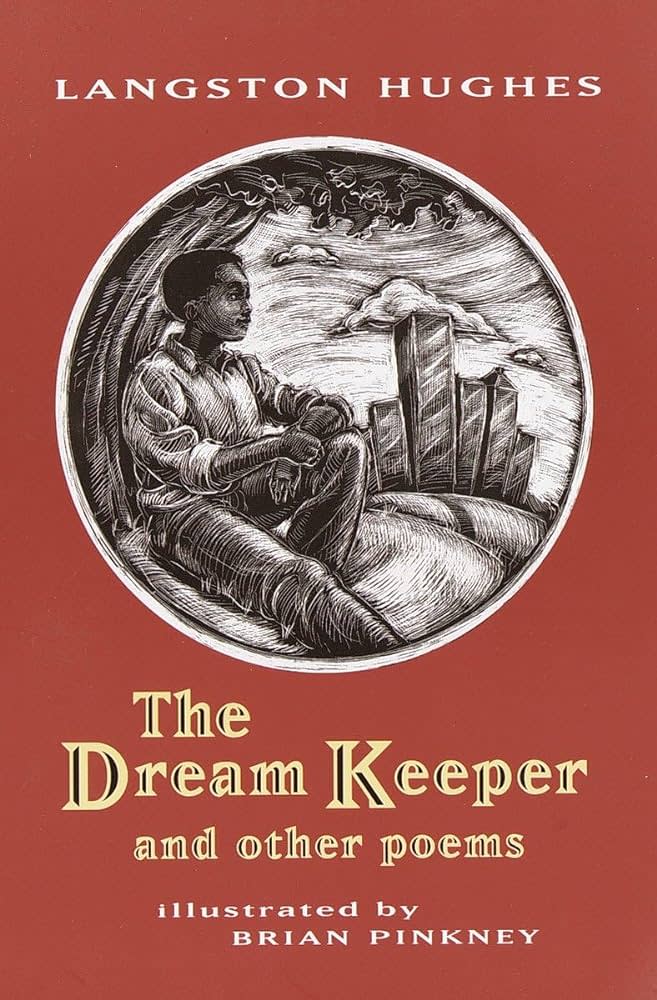Joplin-born Langston Hughes is a Missouri treasure. These 7 poems outline his greatness
Langston Hughes didn't spend much of his childhood in Missouri, but the poet's presence lingers.
Hughes, one of our truest American compasses, entered the world on the first day of February 1901, born in Joplin. His family would purposefully roam, and Hughes spent much of his youth in Kansas and Ohio.
But Hughes' birthplace can't forget him — and neither should we. Murals around downtown Joplin bear quiet witness, memorializing Hughes' words as encouragement for the city's soul, and his face as an icon of the hope we might all someday embody.
If you know Hughes at a surface level, but don't know where to start plumbing his depths, these seven poems — and a few book recommendations for the youngest among us — will cement his place with you as a Missouri treasure.
'Dream Dust'
Exquisite and deceptively deep, like so many of Hughes' poems, "Dream Dust" gathers the stuff — both elemental and mythic — that composes our dreams, before delivering a necessary reminder: dreams are "not for sale."
'Lenox Avenue: Midnight'
Hughes was a master of music, imbuing his verse with the jazz and blues which hummed around his head.
Here, he addresses a current and smoldering flame, offering truths about life that only assert themselves late in the night. "The rhythm of life / Is a jazz rhythm," Hughes opens, before tuning to other city sounds and the very melodic, if mocking, laughter of the gods. This is a torch song, a dirge, a lament, yet its jazz rhythms bounce.
'My People'
Hughes' affection for Black America is rich and clear here, as he pens a litany of all the roles — the vital, dynamic roles — Black people play. The work concludes with a significant question and its certain answer: Are Hughes' people able to laugh amid American sadness?
"Yes, laughers….laughers…..laughers—Loud-mouthed laughers in the hands of Fate," he concludes.

'The Negro Speaks of Rivers'
An American classic, Hughes addresses two forces, timeless in their presence: his ancestors and his own soul. Both, in their ways, existed at the banks of the Euphrates, Congo and Nile. And, Hughes, writes:
I heard the singing of the Mississippi when Abe Lincoln
went down to New Orleans, and I've seen its muddy
bosom turn all golden in the sunset.
'Poem'
In language a child can understand, but conveying sentiments that take a lifetime to sift, Hughes conveys the nature of grief. The middle line of this poem — "There's nothing more to say" — makes the truth plain, yet the truth cannot sit on its hands, giving way to further expressions of love and loss. "Poem" exemplifies Hughes' peerless capacity for articulating so much in so few words.
'Sport'
Hughes traces the movement of life's last notes in this beautiful, sad-eyed ballad. When mortality's music fades out, "... death becomes / An empty cabaret / And eternity an unblown saxophone / And yesterday / A glass of gin / Drunk long / Ago."
'Winter Moon'
In just three lines, Hughes pens an epic ode to every poet's elusive muse: the moon. Its color and "crook" come alive, shining ever more luminous, in his words.
Three books perfect for introducing Hughes to young readers
The universality of Hughes' themes, and the economy of his language, reach into even very young lives, establishing a rapport readers then can take with them through the years. Here are just three books that will suitably introduce Hughes to young poetry lovers:
"The Dream Keeper and Other Poems" not only collects poems Hughes specifically pointed toward younger souls, but the book carries those poems into new, meaningful dimensions with illustrations from the wonderful Brian Pinkney.

From the prodigious pen of Jason Reynolds, "There Was a Party for Langston" promises to revel along with great writers who celebrated Hughes at a pivotal moment in his legacy. Featuring illustrations from the Pumphrey brothers, the book forms "not only a celebratory dance of a biography, but a primer in Hughes’ own jazz poetry," Kirkus Reviews noted.
Part of a long-running biography series for kids, "Who Was Langston Hughes?" from author Billy Merrell will lead young readers through the details, small and large, that build context for Hughes' poetry.
Aarik Danielsen is the features and culture editor for the Tribune. Contact him at adanielsen@columbiatribune.com or by calling 573-815-1731. He's on Twitter/X @aarikdanielsen.
This article originally appeared on Columbia Daily Tribune: Embrace hope with Missouri treasure Langston Hughes in these 7 poems
